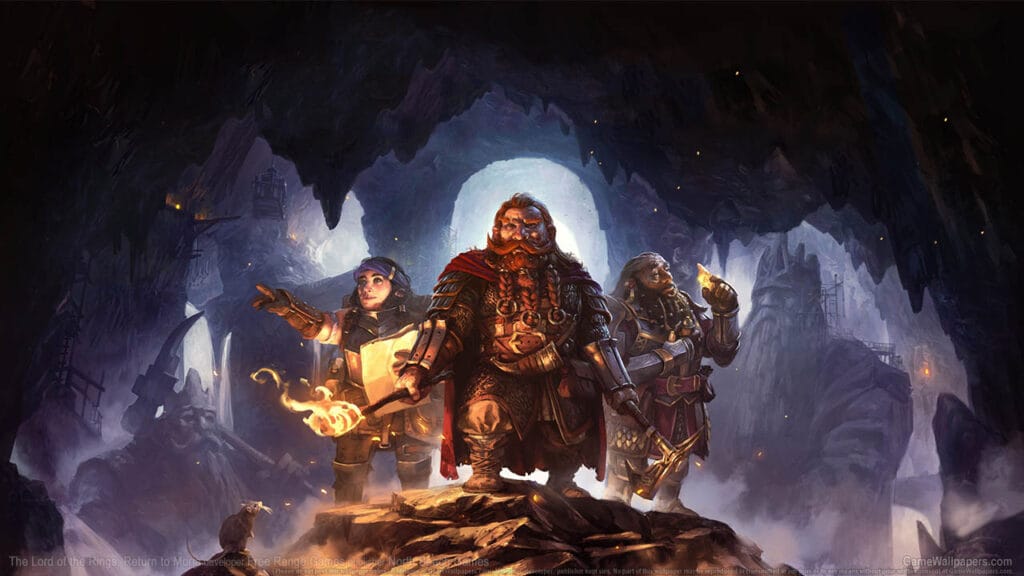How to Survive, Build, and Reclaim the Dwarven Halls
So, you’ve answered Gimli’s call and descended into the dark halls of Moria — but between goblin ambushes, collapsing hunger meters, and your ever-growing pile of ore, you’re wondering how to keep your beard intact. The Lord of the Rings: Return to Moria is a survival-crafting game first, Tolkien adventure second. Here’s how to survive your first few hours — and maybe even thrive.

Gather Fast, Build Smart
When you first spawn, the game doesn’t waste time. You’ll need wood, stone, ore, and food — fast. Start by smashing any crates and barrels you find lying around, and look for glowing mineral veins along the walls. Don’t ignore mushrooms or rat meat early on — you’ll need the calories.
Your first crafting priority should be a fire pit and a basic shelter. Unlike some survival games, Moria doesn’t punish you too hard for being exposed, but you’ll want a safe hub to cook, craft, and store materials. Build close to a Dwarven Forge or Workbench, and create chests to avoid clutter and confusion later.
Pro tip: Build in open, central spaces near fast travel points — it’ll save you a ton of backtracking later.
Combat: Swing Wisely, Dodge Often
Combat in Return to Moria is… functional, but a bit rough around the edges. You have a light and heavy attack, block, and a dodge roll. Enemies like goblins and orcs often attack in groups, so don’t just mash buttons — time your blocks or get overwhelmed fast.
Crafting better weapons quickly makes a huge difference. The early axe and sword options are weak, so aim to mine iron or silver as soon as you can and unlock better gear.
Watch out for: Noise levels. Making too much noise (mining, fighting, running) can attract nearby enemies, or even trigger Orc assaults on your base.
Master Crafting & Upgrading
The heart of the game is crafting. Every tool and structure ties into resource progression — better tools mean better ore, which means stronger weapons and sturdier buildings.
Here’s what to prioritize:
- Pickaxe upgrades – Let you mine higher-tier ores
- Armor crafting – Especially useful before venturing into new zones
- Forges & Furnaces – Smelt ores and unlock better gear
- Storage – You’ll hoard a ridiculous amount of stuff; stay organized
Don’t forget to repair your gear regularly — everything deteriorates over time.
Manage Fatigue, Food, and Focus
There’s more to survival than combat and mining. Your character has needs: they’ll get hungry, tired, and unfocused, which affects how effective they are.
- Hunger affects stamina regeneration and max health
- Sleep restores stamina and prevents debuffs
- Focus boosts crafting efficiency and mining speed
Cook meals at campfires (rat meat, mushrooms, berries) and use beds to rest. When you see your dwarf grumbling, take a break — fatigue makes combat and mining way harder.
Fun fact: Drinking ale boosts Focus. It’s not just for fun — it’s strategic!
Explore With Purpose
Moria is massive, dark, and sometimes confusing. You’ll uncover multiple regions, from ancient halls to magma-filled caverns. Exploration is essential — it’s how you find rare ores, crafting blueprints, lore fragments, and sometimes powerful relics.
Don’t stray too far from your base without:
- A full inventory of food
- Torches or light sources
- Weapons at good durability
You’ll often encounter dark zones that require specific upgrades (like special pickaxes) or power sources to access. Progression is tied to your ability to explore and expand.
Play With Friends (If You Can)
While you can absolutely play Return to Moria solo, the game shines with co-op play. Up to 8 players can work together, mine faster, share loot, and build massive outposts.
With friends, the combat feels more manageable, resource gathering is faster, and — let’s be honest — decorating a Dwarven hall with furniture and torchlight is way more fun as a group.
Playing solo? Focus on mobility, efficient storage, and avoid fights you can’t win.
Building Tips
Building feels clunky at first — placement can be finicky, and space is often tight. Here’s how to make the most of it:
- Snap objects to grid for cleaner layouts
- Leave room around crafting stations so friends can access them
- Use elevated platforms or stairs for multi-level designs
- Decorate! Lighting improves visibility and immersion
Final Thoughts: Build, Fight, Reclaim
Return to Moria isn’t the most innovative survival game out there, but it’s a cozy, lore-rich experience for Tolkien fans who enjoy mining, base-building, and the occasional goblin smackdown. While it sticks closely to familiar survival mechanics, its setting, co-op potential, and dwarven charm make it worth diving into — especially with friends.
Just remember: keep your forge burning, your axe sharp, and your beard clean.
Let me know if you’d like this turned into a PDF, expanded with images or tips for mid/late-game, or adjusted for a specific tone (e.g., more professional or more casual).
